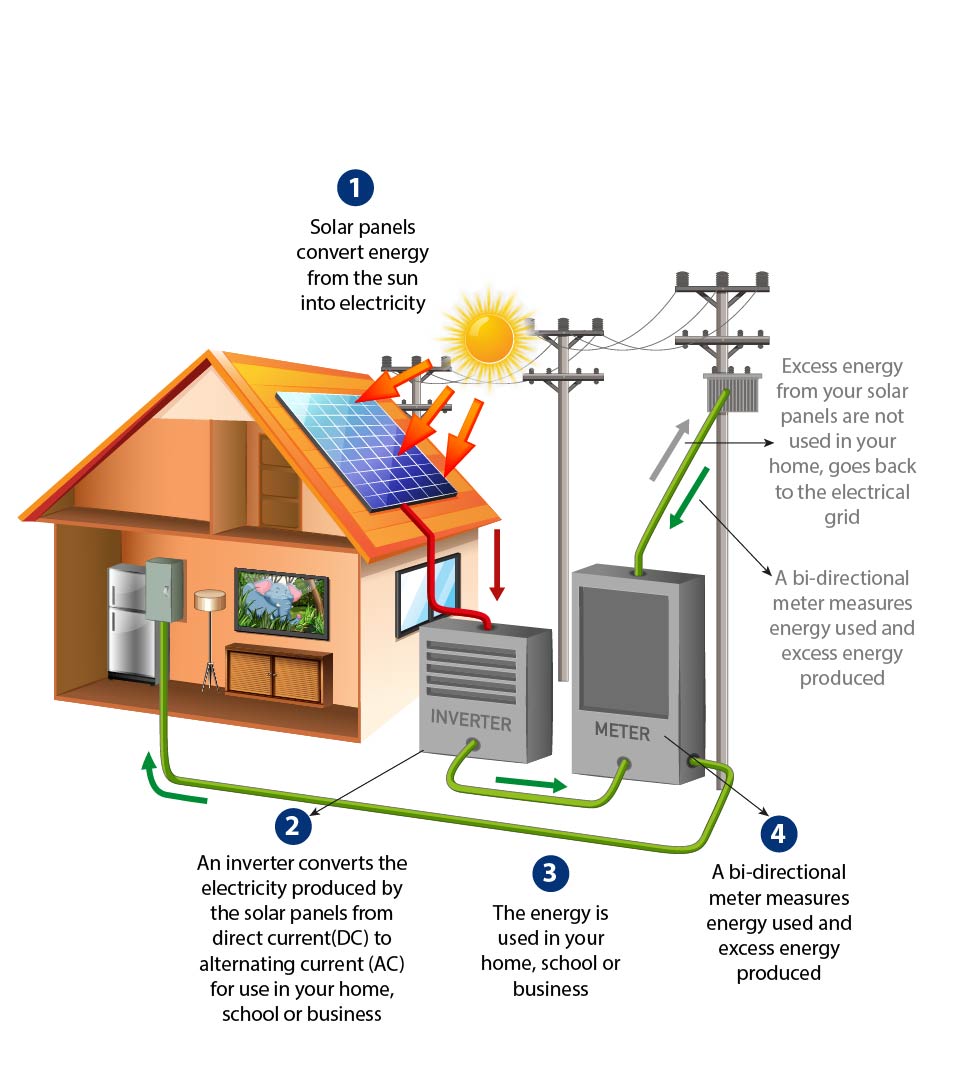As more households and businesses turn to solar energy, net metering has emerged as one of the most effective policies for maximizing the financial benefits of going solar. This system allows solar users to offset their electricity costs by sending excess energy back to the grid, making renewable energy adoption more affordable and appealing.
What Is Net Metering?
Net metering is a billing arrangement that allows solar energy producers to export surplus electricity to the grid in exchange for credits. When their solar panels generate more energy than they consume, the excess power is sent to the utility grid, and they receive a credit that can be used to offset their future electricity usage.
How Net Metering Works
- Solar Energy Generation: Solar panels generate electricity during the day, often producing more energy than the property needs.
- Energy Export to Grid: The surplus energy is sent to the utility grid, and the solar user earns credits for this contribution.
- Energy Usage at Night: When solar panels aren’t producing electricity, such as at night, users draw power from the grid and use the credits to offset their consumption.
- Monthly or Annual Billing: At the end of the billing cycle, users pay only for the “net” energy used (total energy consumed minus the energy exported).
Benefits of Net Metering
- Lower Electricity Bills: By offsetting energy consumption with solar-generated credits, users can significantly reduce or even eliminate their electricity bills.
- Maximized Solar Investment: Net metering ensures no solar energy is wasted, allowing users to make the most of their system.
- Environmental Impact: By encouraging solar adoption, net metering supports the transition to renewable energy, reducing carbon emissions.
- Energy Independence: Solar users rely less on the grid, reducing their vulnerability to rising energy costs.
Regional Variations
Net metering policies vary by country, state, and utility provider. Some offer a 1:1 credit for the energy exported, while others provide a reduced rate, called a “feed-in tariff.” Some regions also have caps on how much energy can be sent back to the grid.
Challenges of Net Metering
- Policy Changes: In some regions, utilities are reducing the credit value for exported energy, impacting solar users’ savings.
- Grid Reliance: Net metering depends on a functional grid, which may not be ideal for those seeking complete energy independence.
The Future of Net Metering
With advancements in battery storage, some users are opting to store their surplus energy instead of exporting it to the grid. However, net metering remains a key driver of solar adoption, providing an incentive for households and businesses to transition to clean energy.
Conclusion
Net metering is a win-win policy that benefits both solar users and the environment. By turning excess solar energy into financial savings, it encourages the adoption of renewable energy and helps reduce the reliance on fossil fuels. Whether you’re a homeowner or a business, net metering is an excellent way to make the most of your solar investment and contribute to a sustainable future.

